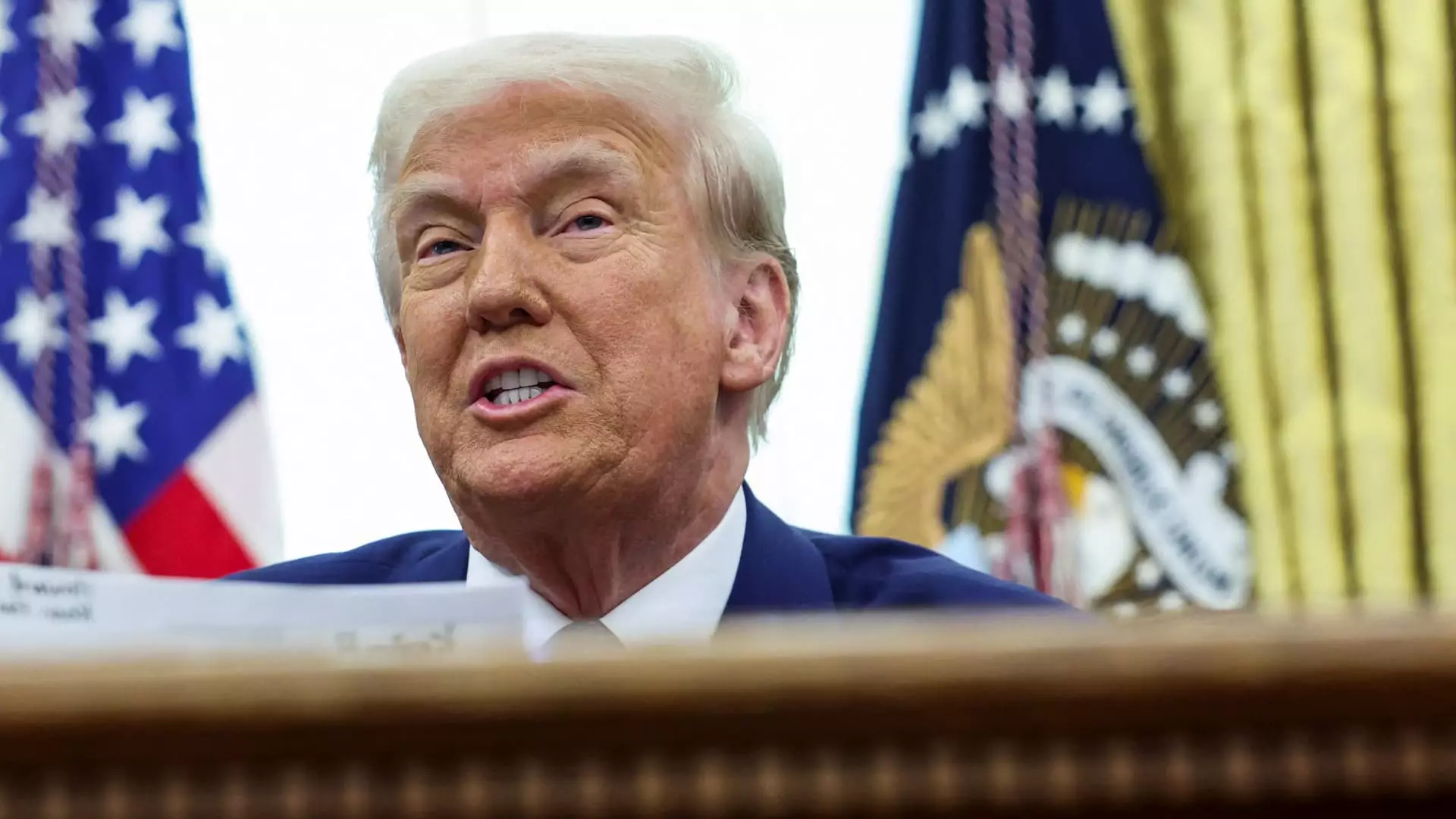In a surprising turn of events, President Donald Trump’s comments on potential reductions to U.S. defense spending have sent ripples through the financial markets, particularly impacting defense stocks. During a speech at the White House, Trump speculated that military expenditure could, at some point, be halved, raising eyebrows and prompting immediate reactions from industry investors. This assertion was centered around a broader conversation about future diplomatic engagements with superpowers China and Russia, indicating a significant shift in strategic military funding rationale.
The President articulated, “At some point, when things settle down, I’m going to meet with China and I’m going to meet with Russia… and I’m going to say that there’s no reason for us to be spending almost $1 trillion on the military.” Such statements, if considered seriously, could lead to a monumental reallocation of fiscal resources, although the notion raises more questions than it answers regarding national security.
Immediate Reactions in the Market
Following Trump’s proclamation, the response from the stock market was swift and negative. Shares of major defense contractors, which had experienced gains earlier in the session, plummeted almost immediately. Companies like Lockheed Martin, Northrop Grumman, and General Dynamics felt the brunt of this uncertainty, with stock prices dropping by 1.3%, 2.6%, and 2.1% respectively. These declines illustrate not only the volatility of defense stocks in response to political rhetoric but also highlight investor anxiety regarding the stability and future funding of military programs.
Investor sentiment is often fragile when it comes to defense spending, as fluctuations in government contracts can have substantial consequences on corporate profitability. The sharp downturn in defense-related equities reinforces how vulnerable investors feel to political discourse, particularly when it concerns a budget as colossal as that of U.S. military spending.
Trump’s remarks come on the heels of a consistent pattern of mixed messages regarding military funding. On one hand, the Trump administration has been actively seeking to streamline governmental budgets, epitomized by their efforts through the Department of Government Efficiency, aimed at cost-cutting across various sectors. Conversely, the President has also emphasized the vital importance of maintaining a robust military, further complicated by ongoing global conflicts like the one in Ukraine, which require substantial military investment.
This dichotomy has left many stakeholders, including allies and analysts, perplexed. TD Cowen policy analyst Roman Schweizer recently commented on the “confusion” stemming from the administration’s conflicting narratives on defense spending, indicating the challenges facing policymakers in creating a cohesive strategy amidst varied national security priorities and political considerations.
As the U.S. grapples with the implications of potentially slashing military funding, the broader strategic context cannot be ignored. A reduced defense budget raises vital questions about readiness and global posture, particularly in a world marked by rising tensions with adversaries like China and Russia. The initiative to convene discussions on military spending with these nations can be interpreted as a bold diplomatic overture, yet it runs the risk of undermining U.S. military presence and deterrence if not approached with caution.
While the President’s comments may seem ripe with optimism for fiscal responsibility, they also expose the delicate balance of ensuring national security while managing budgetary constraints. The evolving conversation around defense expenditure reflects not just a financial strategy, but a pivotal moment in shaping the future of American military engagement on the global stage. Investors, military leaders, and citizens alike will be watching closely as this narrative continues to unfold.

